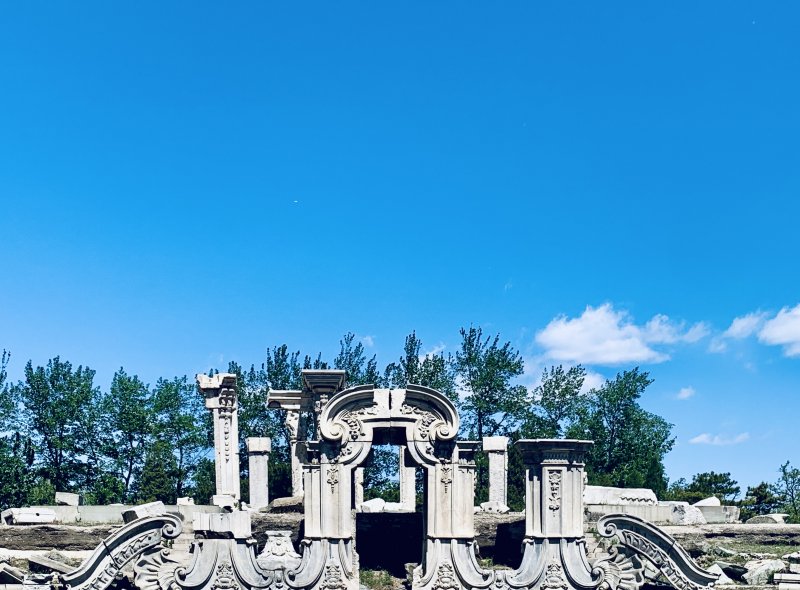Story of the 'Jing: What's Behind the Name "Summer Palace"?
The Summer Palace in Beijing and its neighbor, the Old Summer Palace, are two of the city’s most beloved parks, but the English names for these popular attractions are a little more simplistic than their Chinese variations. The terms most commonly used in Chinese, 颐和园 yiheyuan for the Summer Palace, and 圆明园 yuanmingyuan for the Old Summer Palace, are a bit clearer, and it’s worth noting that nothing in the Chinese names references the relative age or seasonal preference.
The character 园 yuan, shared by both names, is usually translated as “garden,” not “palace.” However, since the term "yuan" has a much broader meaning in Chinese and both sites once served as residences for the imperial court of the Qing Dynasty, calling them “palaces” makes some sense.

In fact, the Summer Palaces were not gardens or even palaces so much as enormous theme parks built by a single family, with each generation adding buildings and landscapes, many inspired by famous scenic places in other parts of China (and sometimes even further afield), landscape paintings, religious sites, and really whatever an emperor (or later Empress Dowager) could dream up and have built. It is easier to manifest your design ambitions when you have access to a large pool of relatively cheap and decidedly non-union labor, as was generally the case back in the days of the dynasties.
Neither Summer Palace was built overnight. Construction of the Old Summer Palace/Yuanmingyuan began in the early 18th century during the reign of the Kangxi Emperor (1654-1722). His grandson, the Qianlong Emperor (1711-1799), expanded the gardens with canals, lakes, hills, temples, and villas. Eventually, the complex incorporated three gardens in one, Yuanmingyuan in the west with the Changchun Yuan (Garden of Eternal Spring) and Qichun Yuan (Garden of Elegant Spring) added during the reign of Qianlong.
The Qianlong Emperor also ordered the construction of a set of buildings and fountains inspired by drawings made by Giuseppe Castiglione, a Jesuit painter and scholar from Italy who was part of the imperial bureaucracy. A group of fountains – the real highlight from the emperor’s perspective – was incorporated into Castiglione’s design with a hydraulic engineering assist from another Jesuit at court, Michel Benoist.
While the ruins of these “Western-style Buildings” are the most visited and photographed section of the Old Summer Palace, they represented only a tiny percentage of the overall gardens and are tucked away – almost as an afterthought – in the northeastern corner of Changchun Yuan.

In 1860, as any primary school student in China will tell you with a well-practiced disapproving tone, the three gardens of the Old Summer Palace were intentionally destroyed during the occupation of Beijing by the Anglo-French Expedition at the end of the Second Opium War.
It had also been under the Qianlong Emperor that another garden was built around a set of reservoirs and canals. This system, parts of which dated to the 13th century and the time of the Mongolian khans, provided water for the Yuanmingyuan and many of Beijing’s waterways, lakes, and moats. Originally called Qingyi Yuan (Garden of Clear Ripples), this adjunct garden was also severely damaged when the Anglo-French Expedition razed the nearby Old Summer Palace.
Beginning in the late 1870s, the imperial court got the notion to rebuild some of the palaces and gardens leveled during the war. In the 1880s and 1890s, significant renovations were done to the Qingyi Yuan under the supervision of the Empress Dowager Cixi (1835-1908).

Page 34 of the Historian Bro Playbook clearly states when things are going wrong in your empire/state/dynasty, immediately find an ambitious woman and blame everything on them.
Your new primary school friend will tell you in a well-practiced disapproving tone, the Empress Dowager spent a ton of money on the project, bankrupting the Qing government and fatally weakening the dynasty at a time when the European and American imperialists repeatedly dunked on China, just as the Empire of Japan was lacing up its sneakers and reporting to the scorer’s table.

Why do we use “Old” and “New” Summer Palace today? Suppose you were a foreigner living in Beijing in the post-Dynasty/pre-Mao days. You tell the boys at the club that you are heading out of town to the Western Hills, where you rented a temple as a weekend retreat for games of cards, shooting, pony rides, adult beverages, and the occasional round of wife-swapping. In that case, they might suggest stopping off to check out the Summer Palace.
To which you would reply, “Which one?” meaning the “Old” Summer Palace (Built in the 18th century, destroyed in the 19th century, and still in ruins) or the “New” Summer Palace (Built in the 18th century, destroyed in the 19th century, recently rebuilt). It’s a distinction that has stuck in most foreign language descriptions of Beijing ever since.
About the Author
Jeremiah Jenne earned his Ph.D. in Chinese history from the University of California, Davis, and taught Late Imperial and Modern China for over 15 years. He has lived in Beijing for nearly two decades and is the proprietor of Beijing by Foot and organizes history education programs and walking tours of the city which are deeper dives into the route and sites described here. Want to learn more about the history of the parks, why they were destroyed, why parts were rebuilt, and what their legacy is today? Beijing by Foot leads walks and discussions at both the Summer Palace and Old Summer Palace throughout the year.
READ: Weekend Walk: Literary Strolls Through Old Peking
Images: Zhipeng Ya (via Unsplash), Jeremiah Jenne, WikiCommons, University of Bristol







